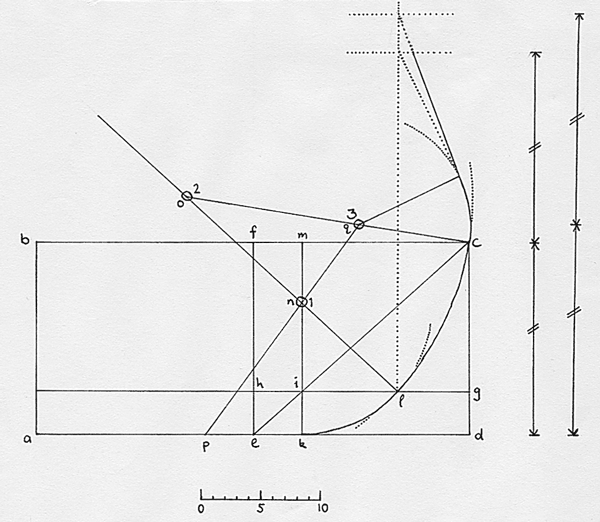
Figure 3.6
Fragments, p. 35 (redrawn).
The diagram is a simplified version of Baker’s drawing. There are many more inked and scribed lines in the original, as well as numbers for the calculation of areas.
In this example of Baker’s procedures for drawing the midship mould, breadth and depth are given as 36ft and 16ft respectively. dg = 1/5 ed. With eh = dg, draw gh. Then draw ec, cutting gh at i. Through i draw mk perpendicular to ed; ek is the floor for this half of the mould. Mark point l on gh such that hl = 2/3 gh. The first centre n is on mk and has its arc passing through k and l. Extend line ln beyond n; the second centre o is found on this extended line and its arc sweeps from l to c. To find the third centre, first mark the other half of the floor with p. The third centre q is at the intersection of oc and pn (extended). Baker then draws the upper futtock in three different ways.
Return to thesis chapter text.